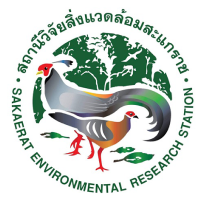Keywords :
Acacia auriculiformis; Cological Restoration; Land Degradation and Rehabilitation; Multivariate Analysis
บทคัดย่อ :
Deforestation diminishes the ecological services
that a forest provides (e.g., flood prevention). To restore such
services, reforestation is often utilized. The full restoration
of the original forest ecosystem, however, can take several
decades. The present study was conducted to identify the
missing key components for rehabilitation of a degraded plot
of land in Thailand on which Acacia trees were planted 18 or
19 years ago. Canopy spectral and soil physicochemical
profiles of the Acacia plantation plot showed more advanced
rehabilitation than in the soil microbial functions, as represented
by soil dehydrogenase activity and community-level
physiological profiles, when compared with those of a natural
evergreen forest. The slower restoration of the soil
microbial functions was thought to: (1) be attributed to the
loss of certain microbes that played important roles in the
evergreen forest soil, and (2) restrict the restoration of the
entire forest ecosystem which was found to be still progressing
towards a full restoration of the land s original
conditions. Finally, possible measures for further rehabilitation
of the ecosystem were discussed.
เอกสารอ้างอิง :
Doi, R., & Ranamukhaarachchi, S. L. (2013). Slow restoration of soil microbial functions in an Acacia plantation established on degraded land in Thailand. International Journal of Environmental Science and Technology:(IJEST), 10(4), 623.



